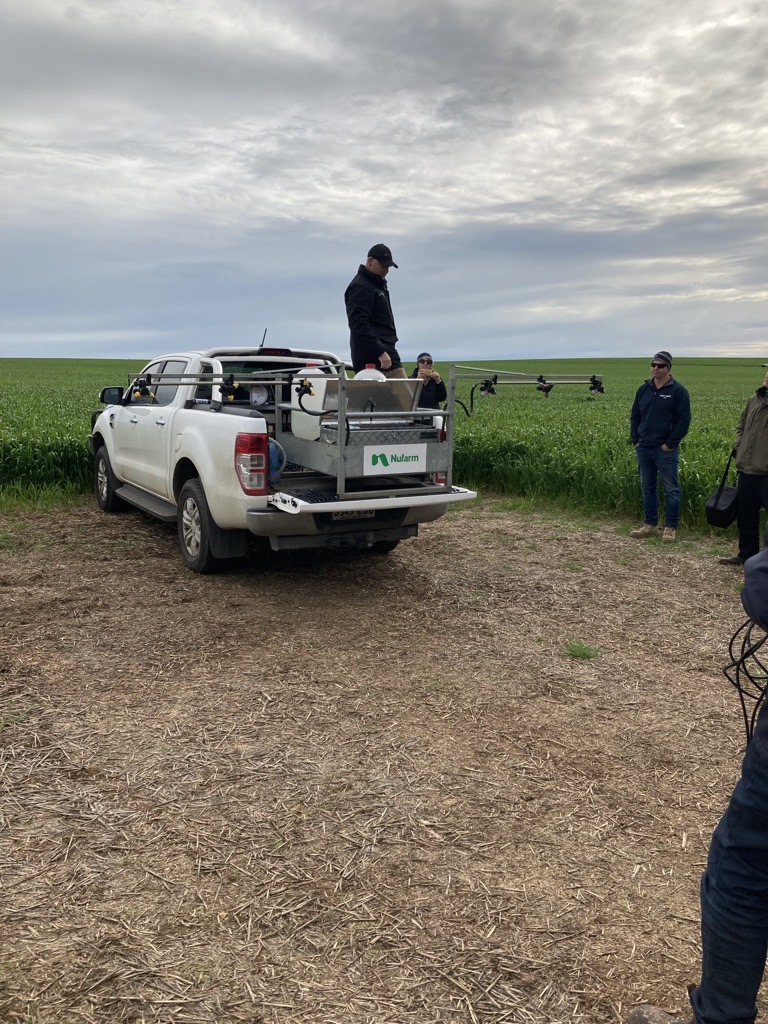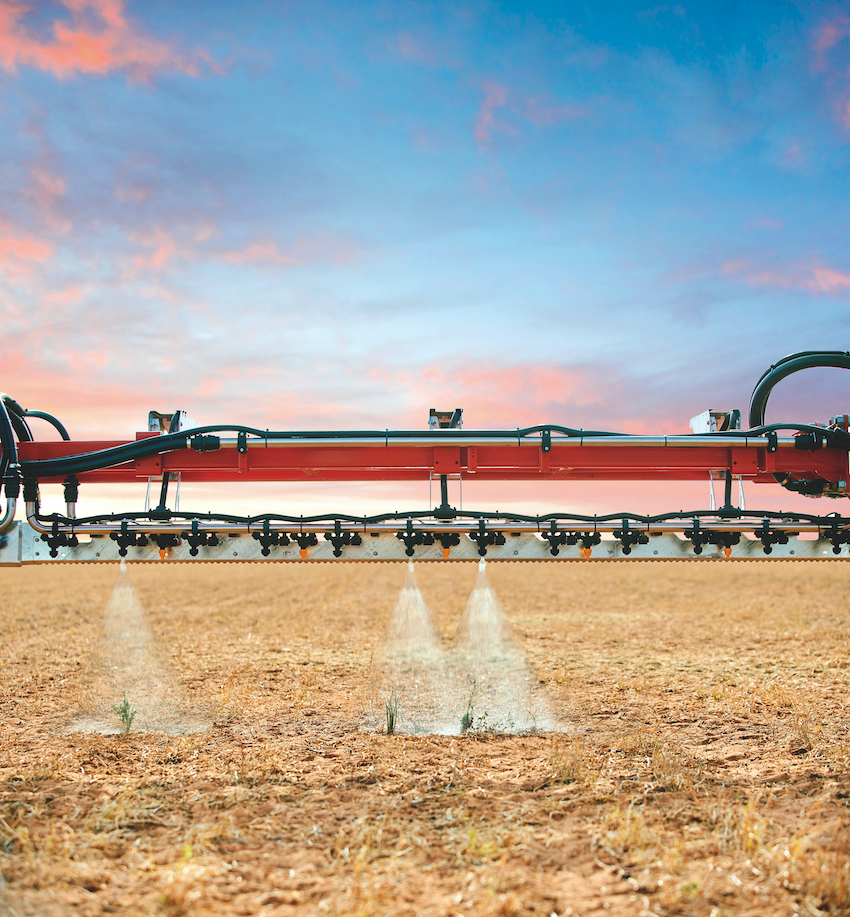 David Keetch demonstrating spray application technology. Photo: Nufarm
David Keetch demonstrating spray application technology. Photo: Nufarm
Post-emergent herbicides no longer need to be applied across an entire paddock, with technology platforms targeting spraying only where weeds are present.
This new technology – visually distinguishing weeds from crop – is known as green-on-green optical spot spraying technology (OSST).
Given the potential benefits to growers and the environment from OSST, GRDC has invested in a portfolio of projects to rapidly mature and commercialise this technology, add value to it, and meet regulatory requirements.
Co-investing in this portfolio are Nufarm – which brings expertise with herbicide use and registrations – and its subsidiary, Croplands Australia, a specialist spray machinery business.
Nufarm Australia portfolio solutions lead David Rumbold says that a key focus is site-specific weed management to unlock new solutions to resistance that are not feasible for broadcast application.
He says that while green-on-brown optical spraying is becoming increasingly common, green-on-green will grow in the Australian market as this technology evolves.
Push for regulatory recognition
A sequel to this work is acting on the increasing awareness that site-specific weed management technology is evolving at rates that necessitate regulatory reform when it comes to registering novel chemical use patterns. To this end, the project is developing new Good Laboratory Practice and Good Agricultural Practice protocols to facilitate regulatory registrations.
These protocols will enable the registration of new herbicide uses that are not suitable for traditional broadcast application by allowing the Australian Pesticides and Veterinary Medicines Authority (APVMA) to more-effectively assess registration packages submitted for approval.
“Nufarm will apply for registration of up to three novel herbicide use patterns resulting from the development of the new protocols,” Mr Rumbold says. “These use patterns will be for one or more of the three main crop groups: cereals, oilseeds and pulses.”
Croplands Australia is also partnering in a project with world-leading providers of OSST systems to help develop the technology needed to accelerate and optimise boom-mounted camera or other sensor technologies for crop applications in Australia.
Croplands general manager Sean Mulvaney says the majority of green-on-green technology has been focused on artificial intelligence (AI) technology developed in soybean and corn crops in North America.
“That means work is needed to optimise green-on-green technology for Australian crops, conditions and weeds,” he says. “While cost savings through reduced sprayed area are well documented, we believe the most significant opportunity for growers will be resistance management and driving down the weed seedbank.”
Time of change for chemical companies

A boomsprayer selectively applying herbicide only on weeds using WEED-IT precision spraying technology. Photo: Nufarm
Both men add that while it might seem counter-intuitive for Nufarm and Croplands to actively market technology that reduces the use of crop protection products, it is about adapting to change. Both companies are not only ready for these technologies but are embracing them.
Already, Croplands is considered the market leader in green-on-brown OSST with WEED-IT.
Mr Rumbold says Nufarm will adapt to this change: “We’re already leading the way with product registrations in the green-on-brown OSST space, such as Terrad’or®, Crucial®, Dropzone® and Biffo®.”
At Nufarm, David Keetch (currently senior field R&D specialist for broadacre crops) will be promoted to the new role of green-on-green program director to lead these projects from 1 April 2024.
He says it will be exciting to evaluate and refine the OSST technology: “I look forward to creating world-first green-on-green herbicide registrations that will potentially tackle some of our most problematic in-crop weeds.”
Overall, Nufarm is playing a key role in GRDC’s R&D program in OSST, which extends to collaborating with the Australian Herbicide Resistance Initiative, New South Wales Department of Primary Industries and other GRDC projects that aim to value-add to OSST and deliver innovations for growers in site-specific weed management.
More information: David Keetch, david.keetch@nufarm.com

























































